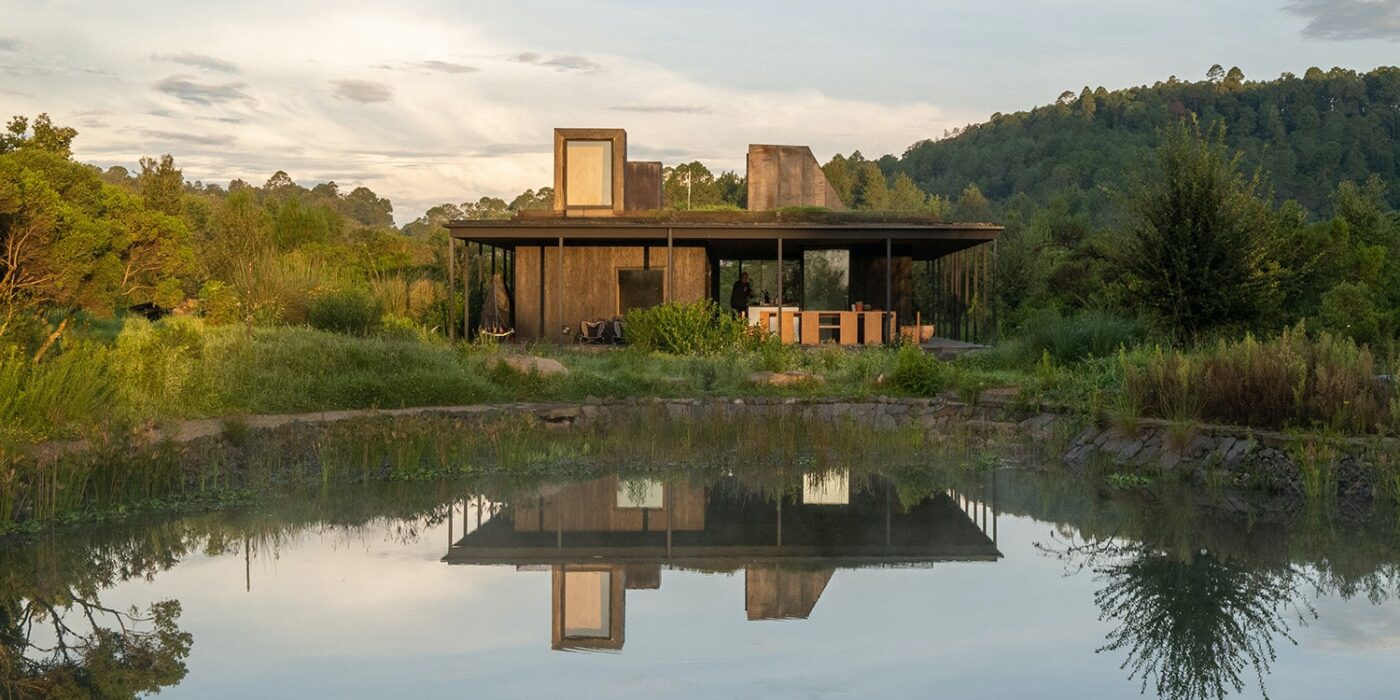Rain Harvest Home – is located within Reserva el Peñón, a landscape-driven development which has achieved water self-sufficiency for a community of 80 families in 450 acres of a nature reserve, two hours from Mexico City. The Reserve framed our thinking around sustainability generally, and rainwater harvesting specifically. It pushed us to think at a larger level where the whole Reserve became the site, and the home was one piece of that. We also thought about how we could explore the larger issues of water conservation in Mexico, with this being an example of how to harvest rainwater on a small scale that could then apply to other projects. That became a driver in a powerful way. It was an idea that evolved over the course of the design process, and as the client became increasingly interested in cultivating a healthy, holistic lifestyle where they could live in harmony with the land.
Architizer chatted with Robert Hutchison from Robert Hutchison Architecture, and Javier Sanchez from JSa Arquitectura, to learn more about this project.
Architizer: What inspired the initial concept for your design?
Robert Hutchison & Javier Sanchez: The brief was simple: the clients wanted a small cabin to enjoy the mountainous site. Valle de Bravo has a dry season and a rainy season, and the sun plays a trick every day in both of those seasons. You can enjoy the sun, but you have to be careful with it. Here, you need to have spaces that are open and covered; enclosed and covered; and outside and uncovered. You need all three qualities, so we needed to make that happen within the three structures.
At the start, the project had a simple, classic program: 2 bedrooms, a bathroom, and a kitchen. When we were on site, we started developing the idea of splitting up the program into separate buildings. It started with wanting to separate the function of bathing, which led to the idea of the bathhouse. And then the separate studio emerged from that.
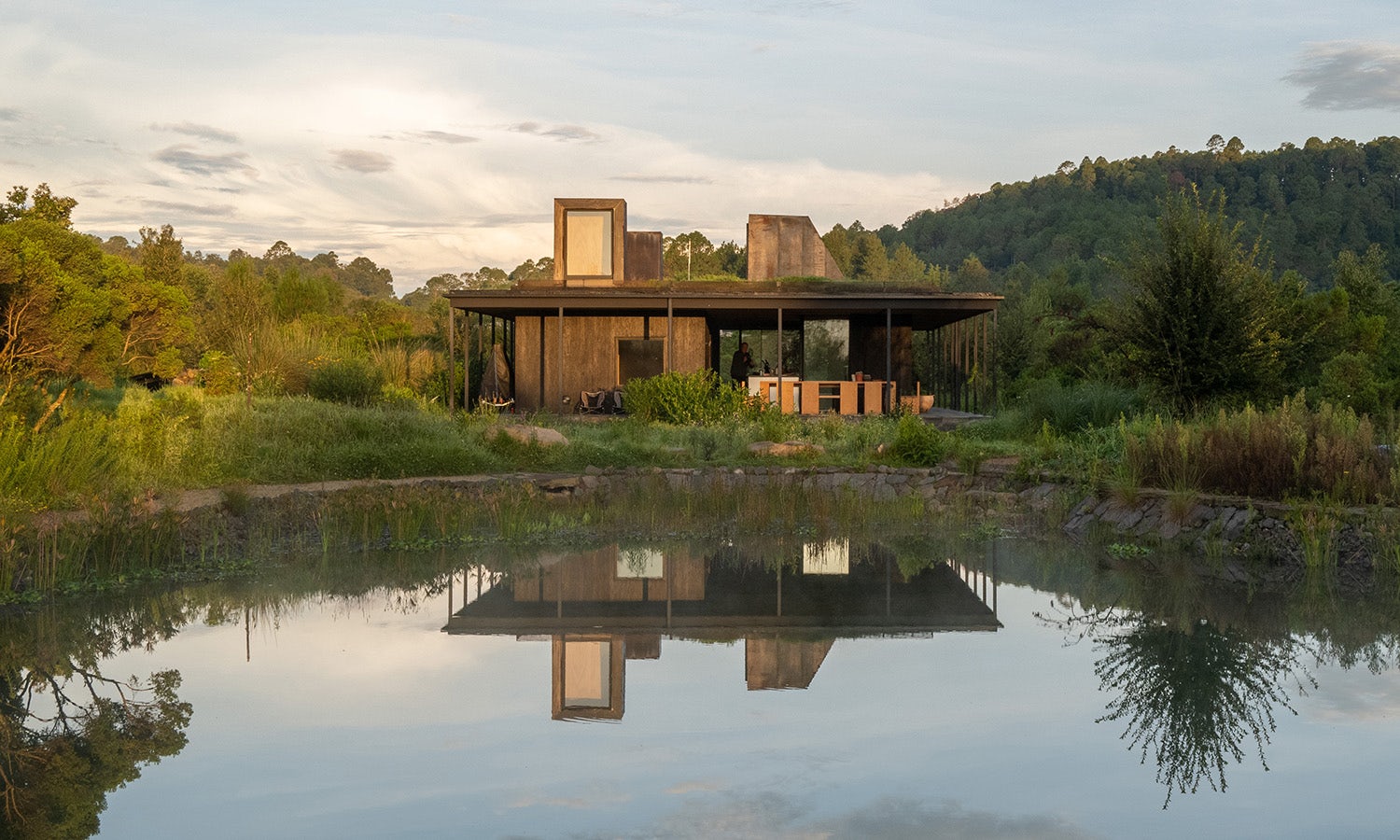
© JSa Arquitectura, Robert Hutchison Architecture
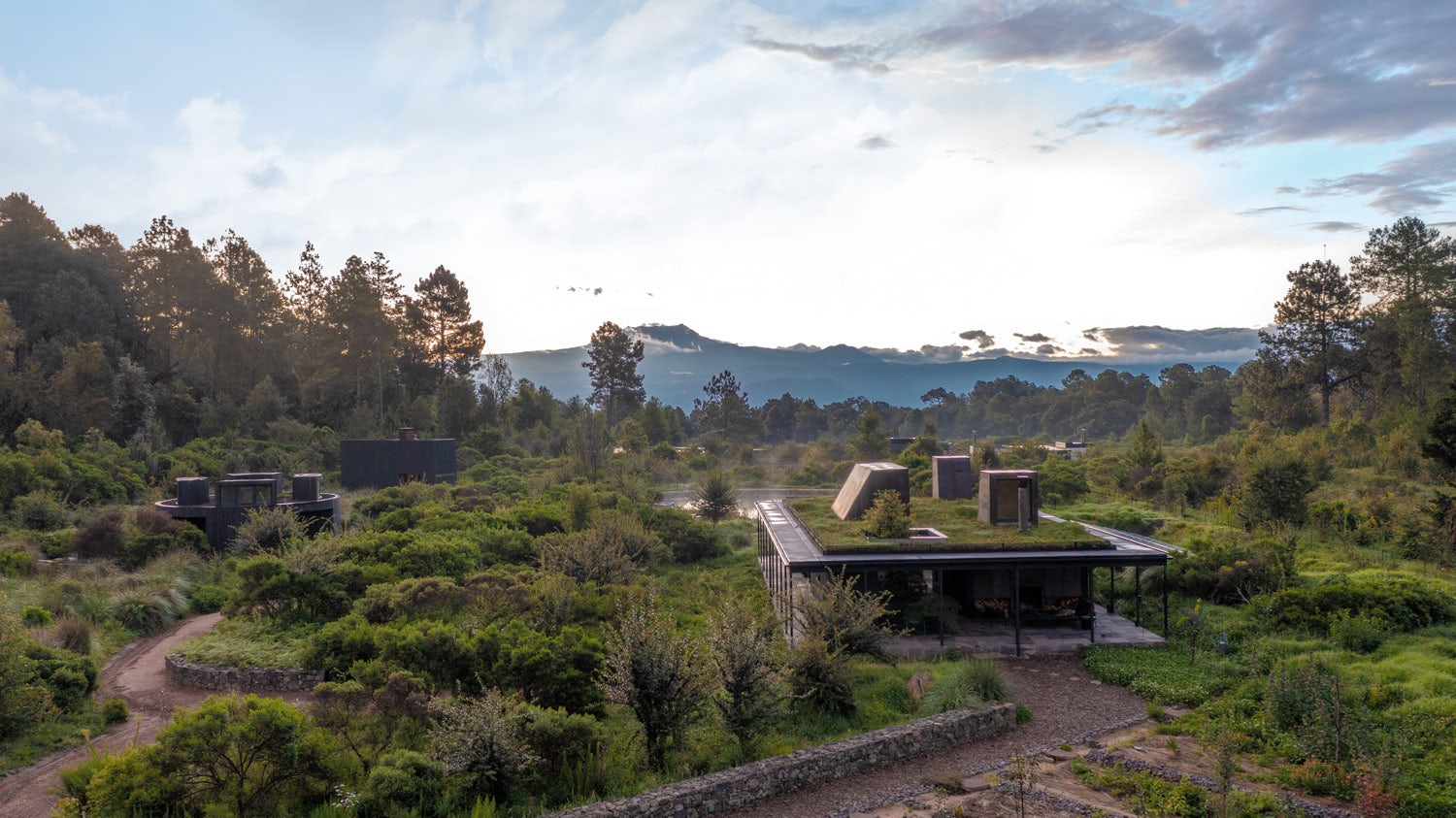
© JSa Arquitectura, Robert Hutchison Architecture
This project won in the 10th Annual A+Awards! What do you believe are the standout components that made your project win?
Rain Harvest Home offers a model for designing regeneratively with water. The home is 100% water autonomous and, in times of surplus, it is water positive and feeds excess water back into the community’s larger reservoir system. Not only does the design help restore the microclimate of the site, but it stands as a testament to the potential of rainwater harvesting for off-grid, self-contained water systems that eliminate reliance on municipal water sources. At the same time, the element of water contributes to the overall spatial and experiential quality of the project, reconnecting people with their environment by engaging the senses. More than any other element, conserving and improving the quality of water as a precious resource has the potential to dramatically improve the health and sustainability of built environments in Mexico, and beyond.
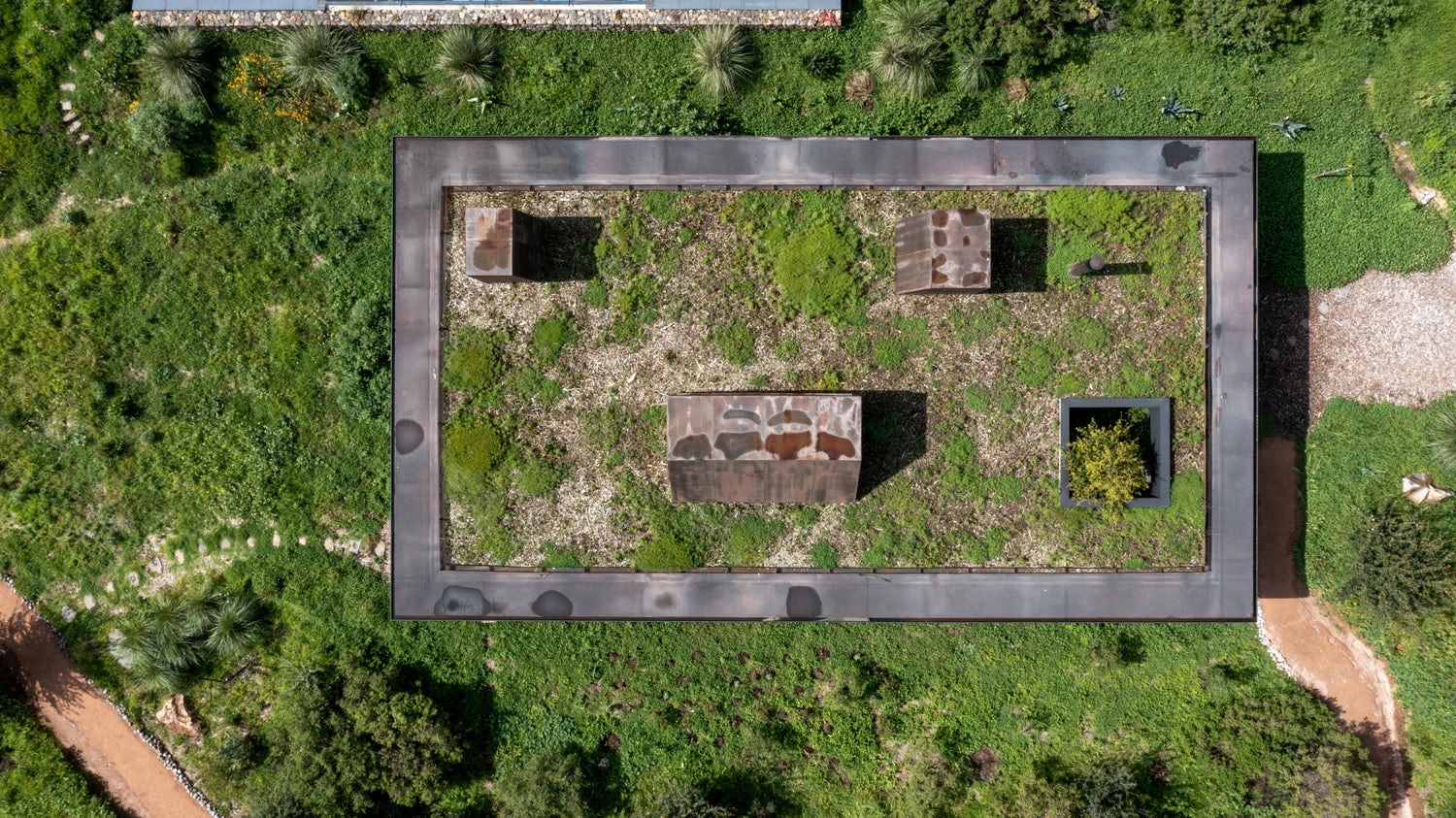
© JSa Arquitectura, Robert Hutchison Architecture
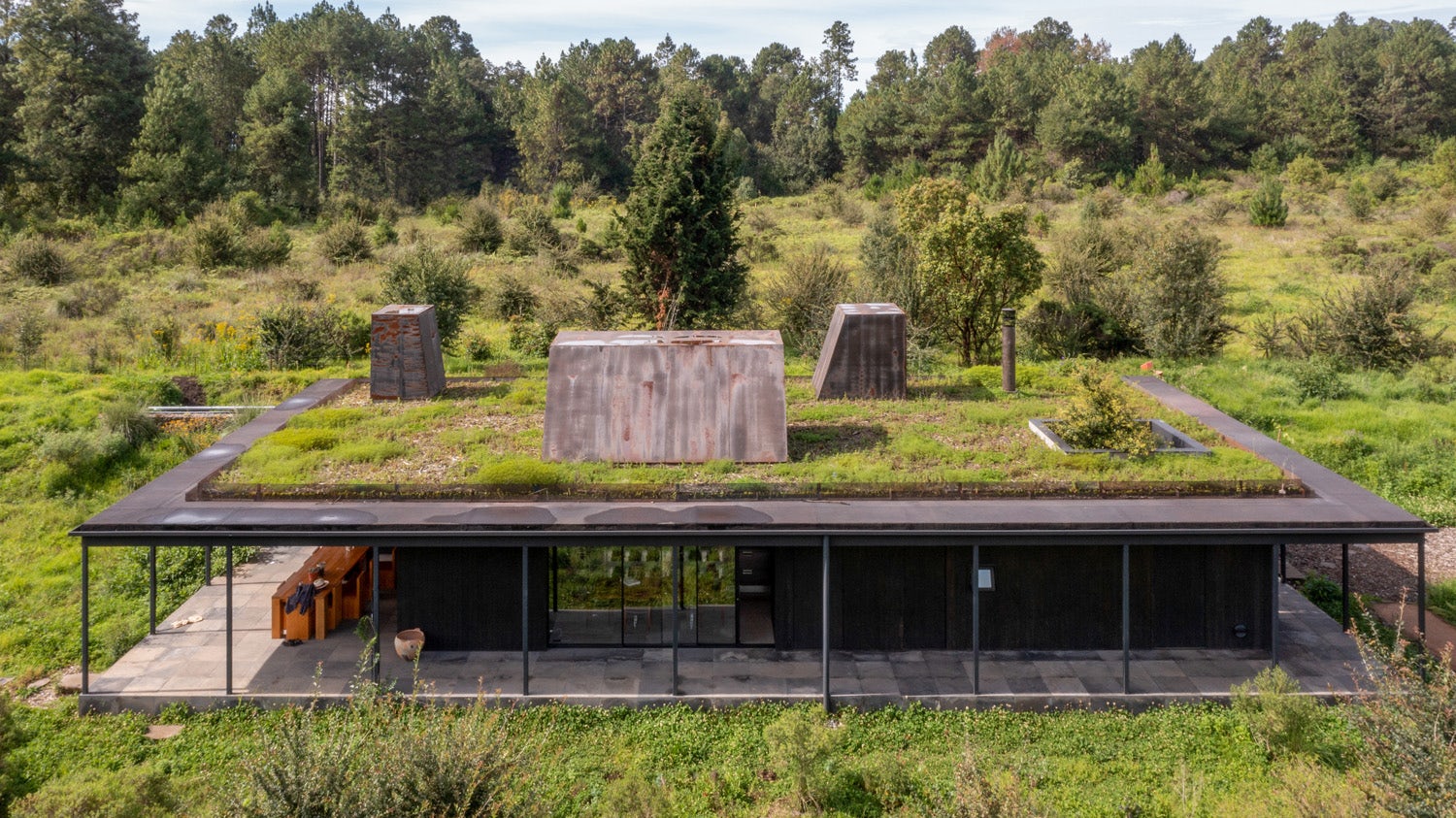
© JSa Arquitectura, Robert Hutchison Architecture
What was the greatest design challenge you faced during the project, and how did you navigate it?
Integrating the rainwater system was an initial design challenge, and continues to be an everyday challenge. Now, the rain harvesting system and on-site reservoir are a learning laboratory where the clients are continually learning about how the system performs. Understanding that the water and food systems on site are part of a living process that fluctuates depending on changing natural conditions, the client continues to experiment in ways to optimize the system through seasonal calibrations and refinements. Nothing is as objective as science would make it seem because things are always changing over time depending on how much it rains, and when. The house has to live with that, and it’s a constant learning experience for us as designers. It’s about integrating design into the cycle of water and of life.
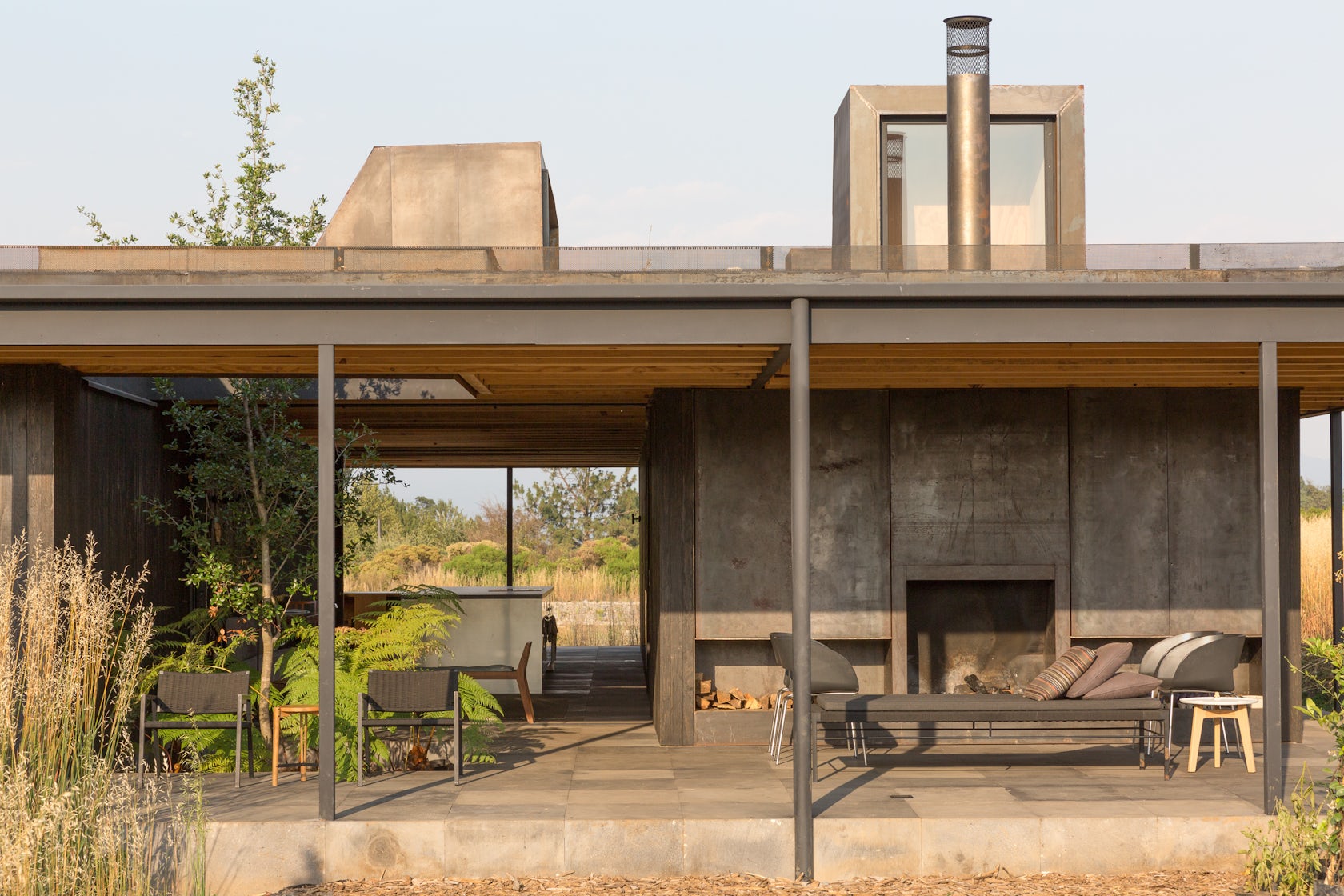
© JSa Arquitectura, Robert Hutchison Architecture
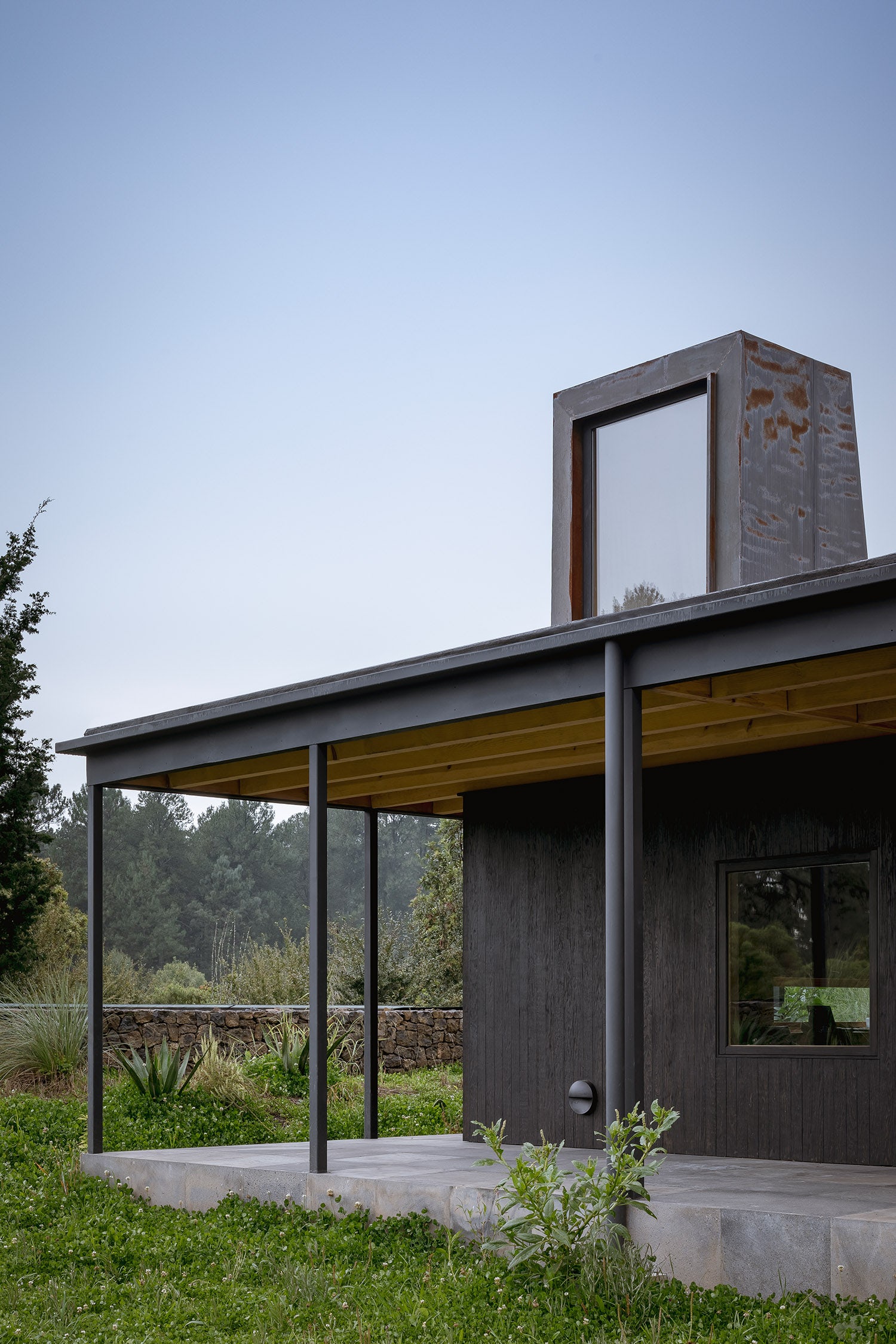
© JSa Arquitectura, Robert Hutchison Architecture
How did the context of your project — environmental, social or cultural — influence your design?
The site is relatively flat, but sits within a mountainous environment. All around are cliffs and steep slopes, but our site rests in a small plateau vegetated with continuous, single-story-high shrubs and brush. Because of these site conditions, we wanted to make the buildings disappear within the vegetation. This is why we designed a series of three low pavilions that nestle into the landscape and are dispersed across the site. We wanted a strong connection between each building and the landscape. Often as architects, we think about how spaces are created between buildings, but this was about letting the landscape be that interstitial space. The landscape becomes the connection between the buildings, just as it delineates the spaces between them. When you move through the site, there’s an experience of the buildings constantly disappearing and reappearing. It’s a process of discovery.
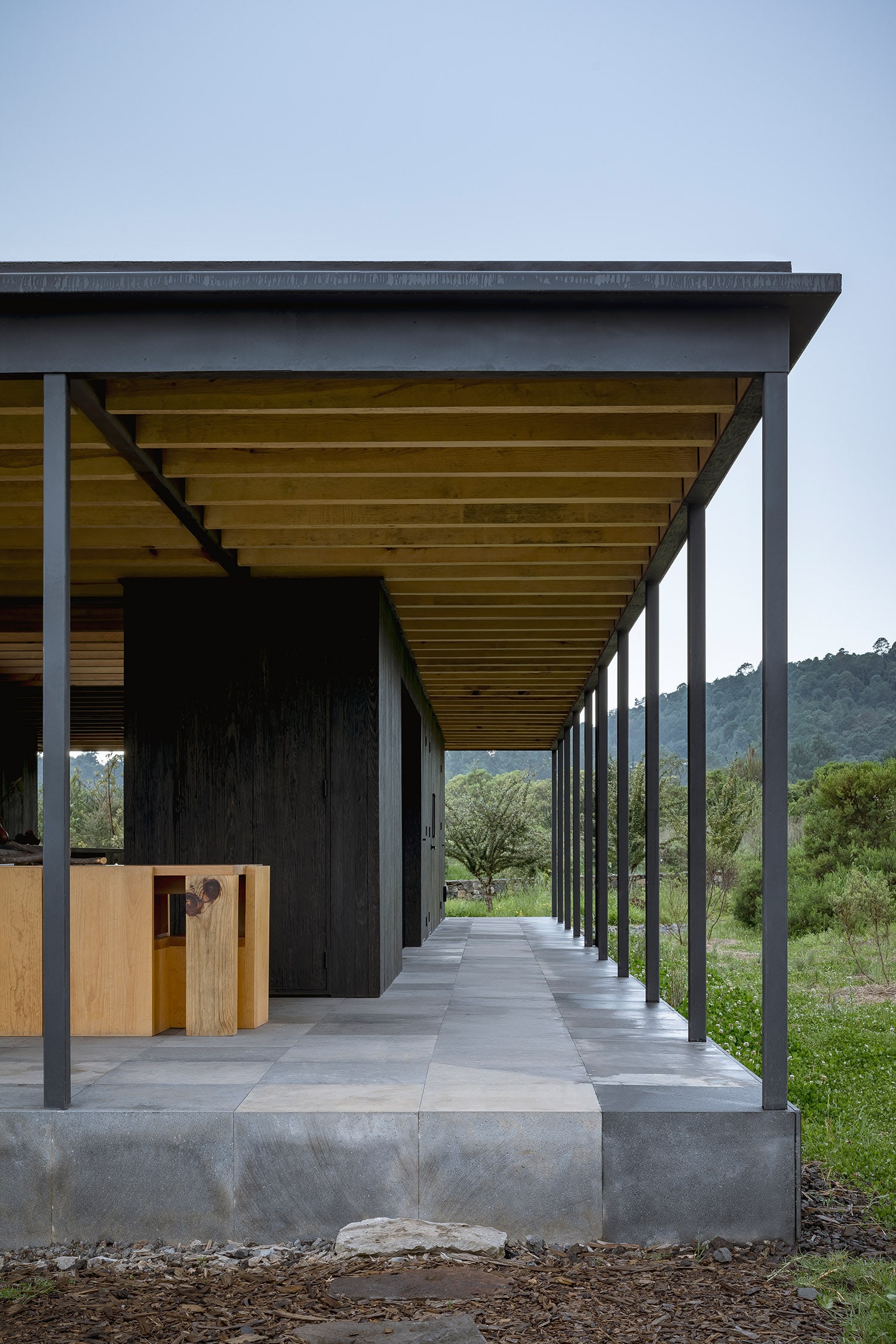
© JSa Arquitectura, Robert Hutchison Architecture
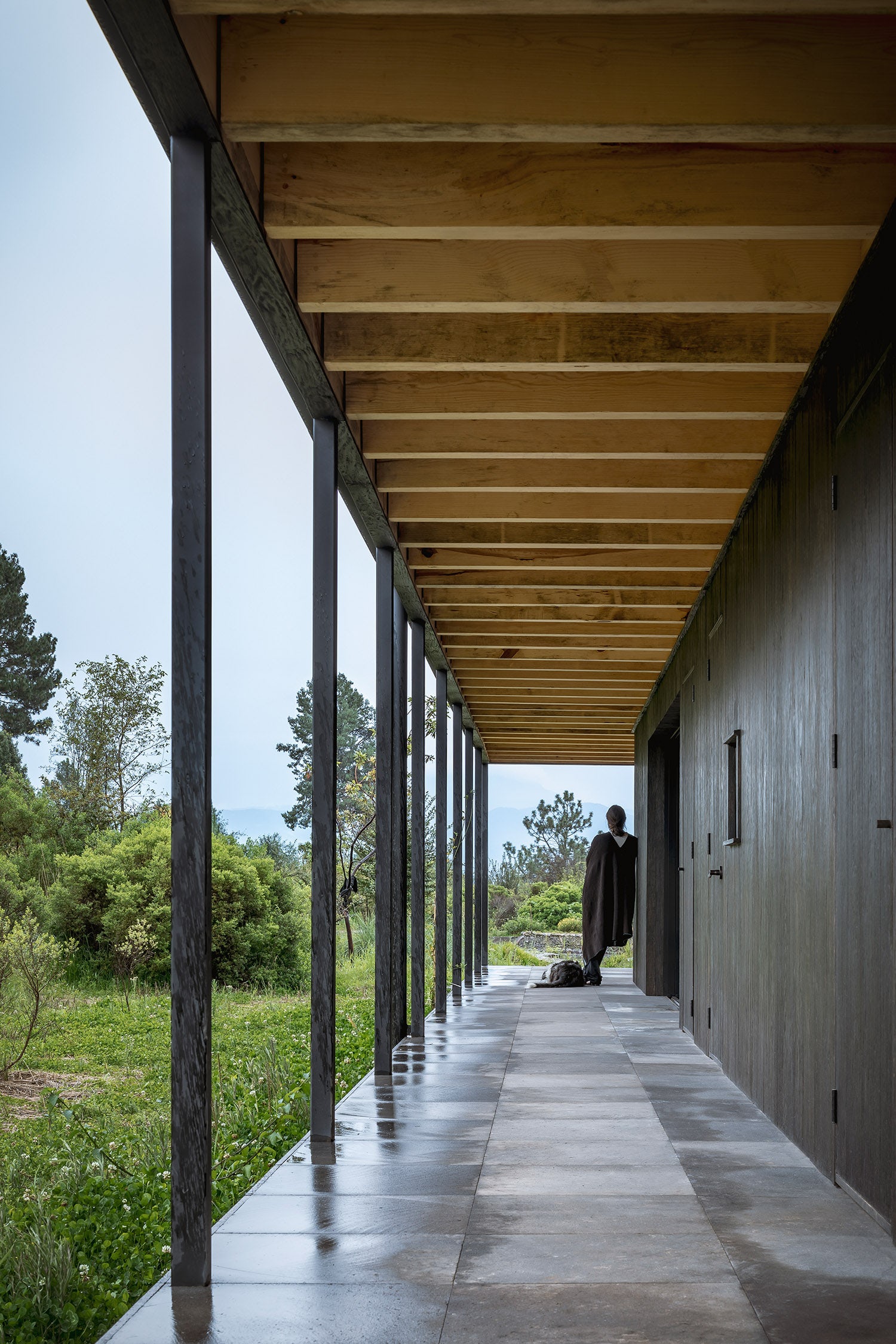
© JSa Arquitectura, Robert Hutchison Architecture
How important was sustainability as a design criteria as you worked on this project?
Within La Reserva, each home is required to incorporate rain harvesting, with most of it coming from the individual home’s rainwater harvesting system and a small portion coming from the reserve’s reservoirs. We wanted to try and raise the bar and see if we could harvest 100% of our water from our individual site, rather than depend on external sources. This was important because there is a major water shortage in Mexico City, which is absurd because it rains a lot, but we don’t harvest that rainwater. Instead, we pump water in and out from the valley. As designers, we need to talk about those issues within our designs and experiment with new possibilities. Sometimes when you have a built example, it’s easier to understand new possibilities, particularly around rainwater harvesting.
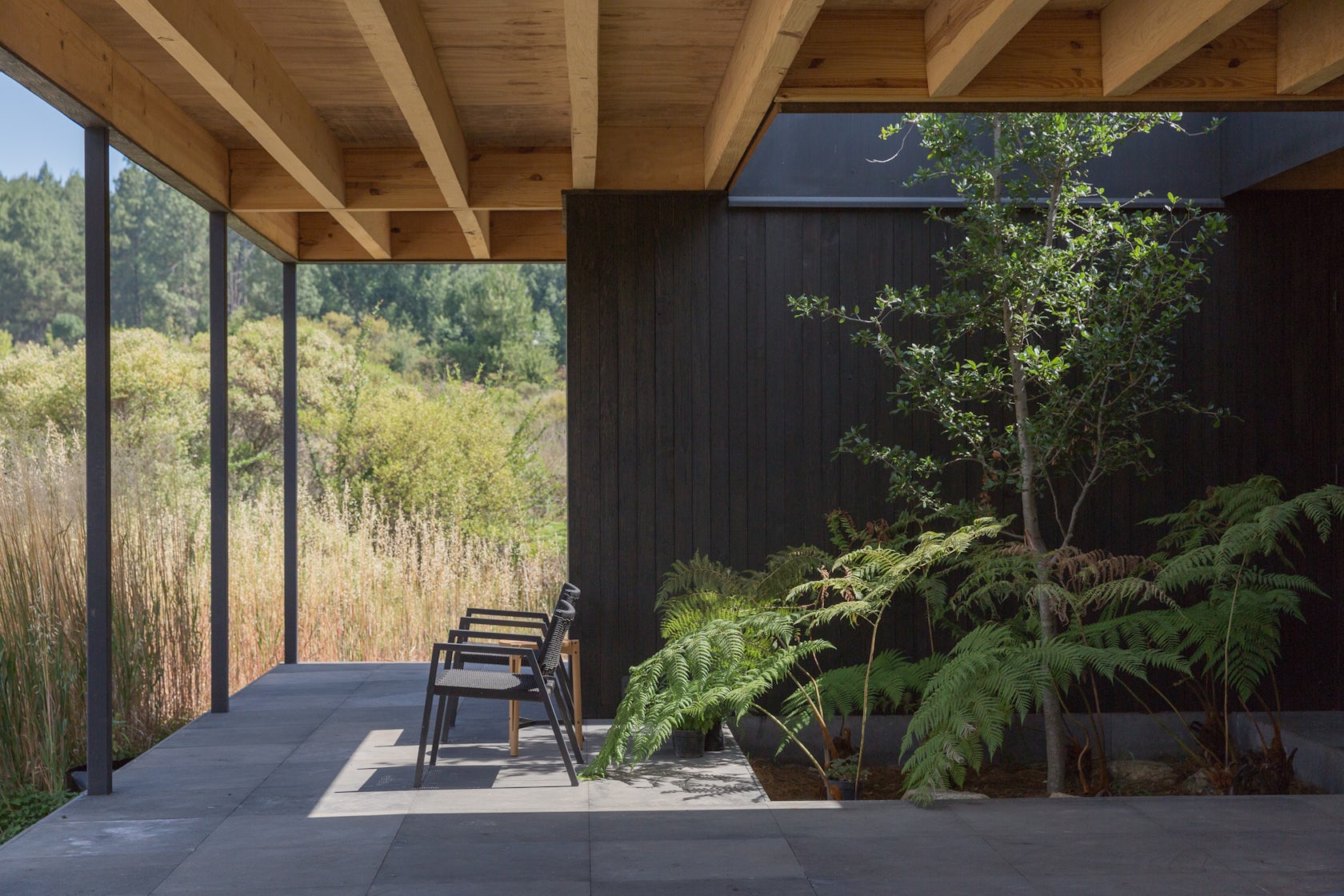
© JSa Arquitectura, Robert Hutchison Architecture
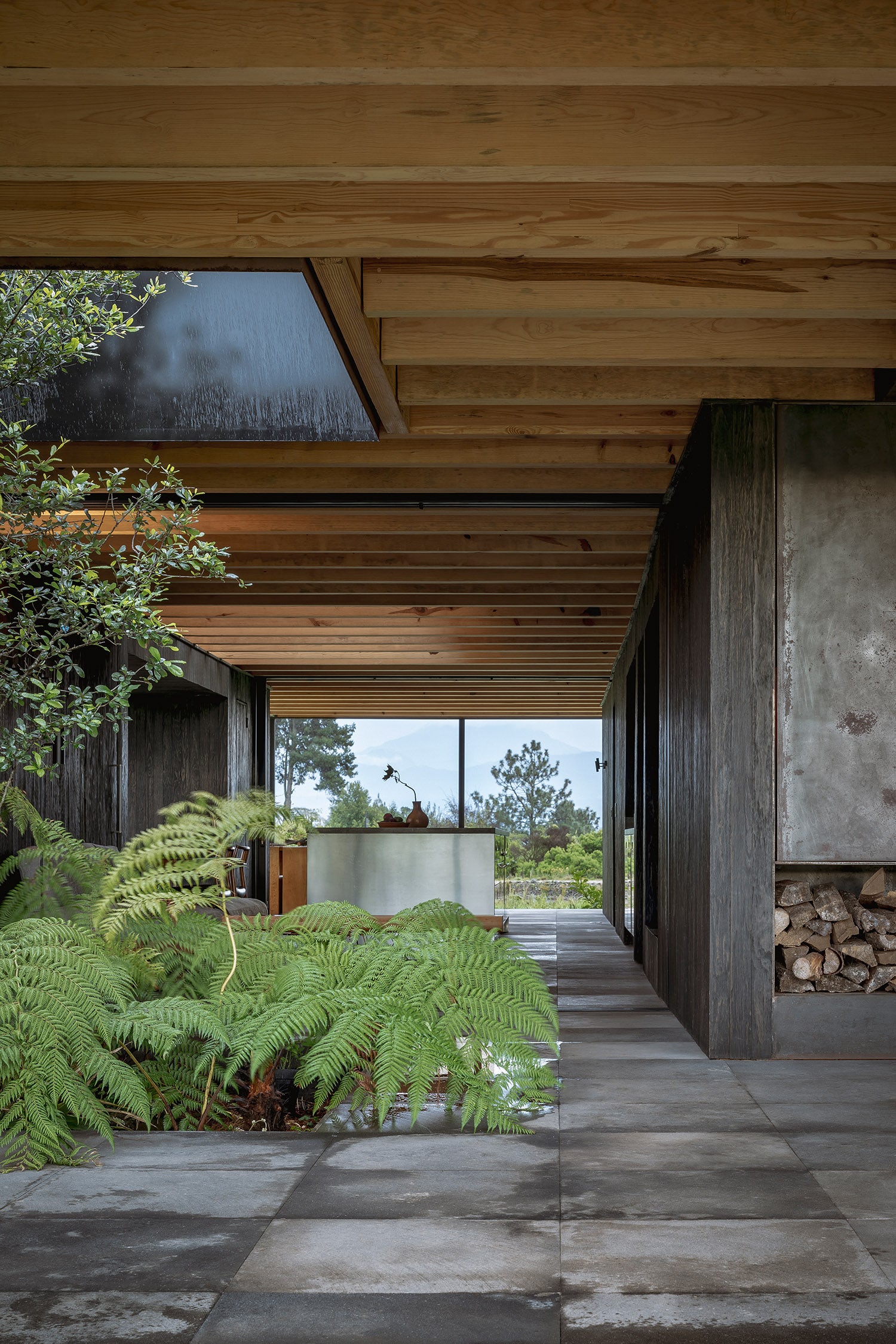
© JSa Arquitectura, Robert Hutchison Architecture
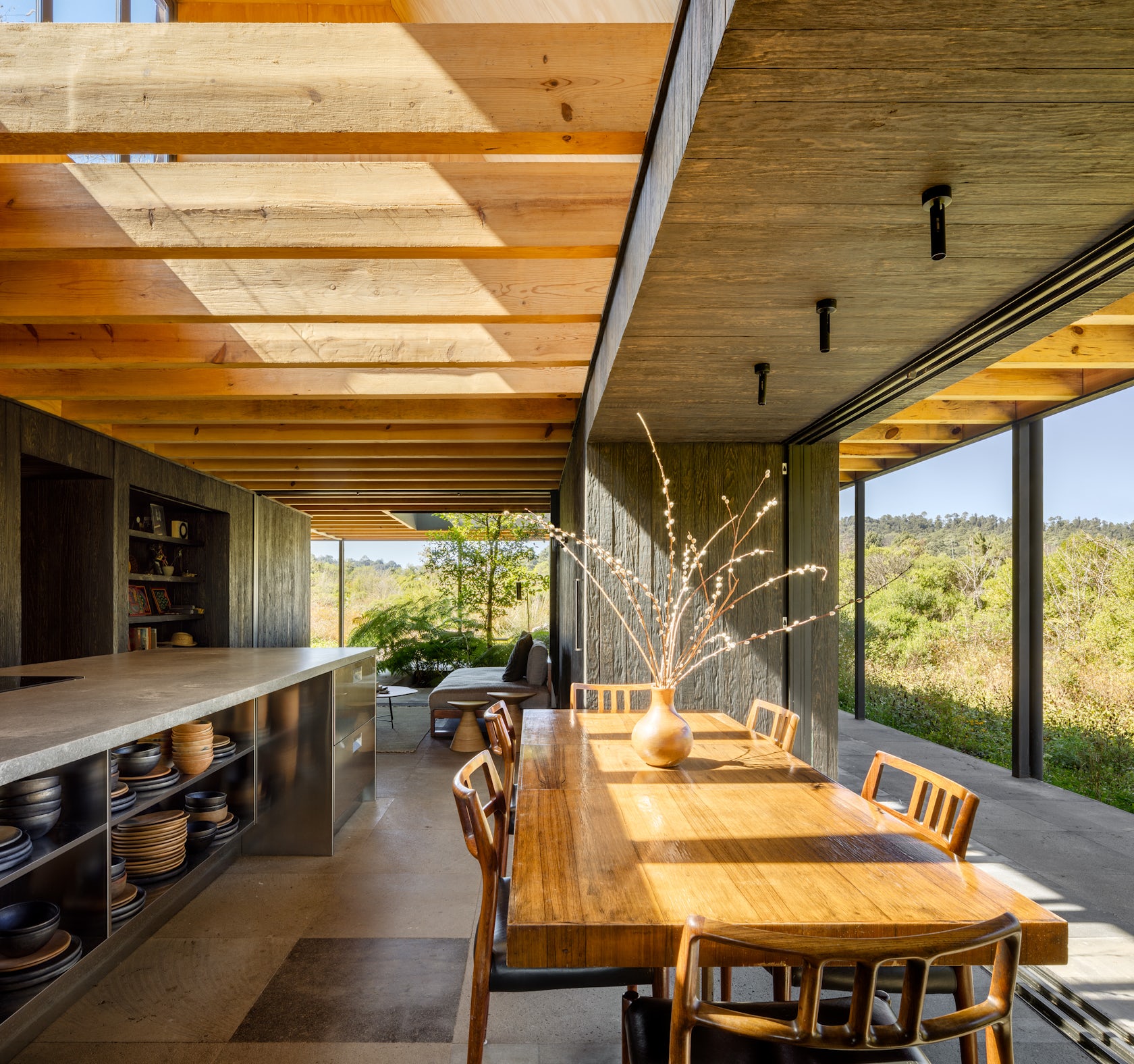
© JSa Arquitectura, Robert Hutchison Architecture

© JSa Arquitectura, Robert Hutchison Architecture
Team Members
Sean Morgan, RHA; Bernice Solis, JSa
Consultants
TAF Alejandro Filloy, Bykonen Carter Quinn, Helene Carlo, MicMac Estructuras, Rhometal, Miguel Nieto, Teoatonalli
For more on Rain Harvest Home, please visit the in-depth project page on Architizer.
Rain Harvest Home Gallery

